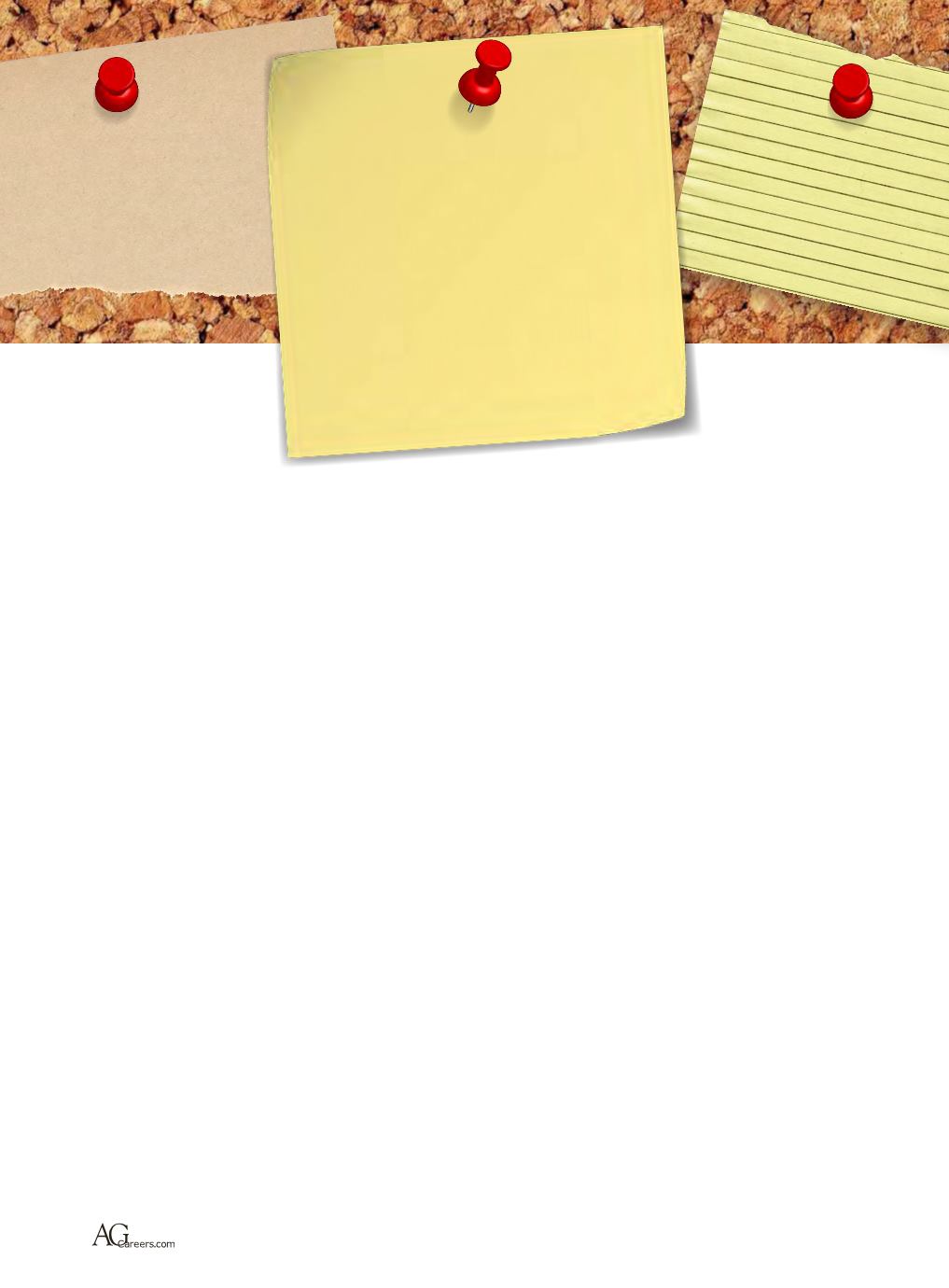
12
A
g
& F
ood
E
mployer
G
uide
T
THROUGHOUT YOUR
JOB SEARCH
there are
many details you need to cover,
but there are several pitfalls you
should avoid. Want to make a great
impression and land that dream job?
Don’t sink your chances before you
even get started! Follow these tips on
what NOT to do during the
application and hiring process.
RESUMES & COVER LETTERS
One big mistake is using the same
materials for every application.
“Tailor your resume and cover letter to
the job you are applying for,” shared
Jackie Bass, Director of Human
Resources, Christensen Farms.
“Research the organization to have a
good understanding of the job you are
applying for so you are prepared for
your first contact with your potential
employer,” added Bass.
Objective statements seem to
be a thing of the past
; they take up
prime real estate at the top of your
resume. “Objective statements are
typically canned and often not relevant
to the actual job,” said Deb Franklin,
VP HR, CLAAS. “Sometimes there is
such a disconnect, the HR professional
will discount the resume and move on,”
added Franklin. Save the space
normally taken up by an objective
statement and use it to enhance your
accomplishments and add a marketing/
branding statement. “Start out with a
BAM! statement about your signature
strength, something exciting that makes
the reader want to learn more about you,”
added Franklin.
“If you don’t have much actual
work experience, insert a skill table
(without lines) including one to three
word phrases that describe you, such as
‘customer centric’ or ‘problem solver’,”
shared Franklin.
“When just graduating from college,
the degree seems most important to you,
however the employer may want to know
more about your competencies and
potential. Resist the temptation to list
that degree first—start with a marketing
statement, skill table, work experience
and then degree,” added Franklin.
Don’t neglect customizing your
resume with keywords.
Make sure
to build relevant keywords from the
employer’s job description into your
resume. Many employers utilize an
online applicant tracking system (ATS)
to manage the flow of applications. The
technology within the ATS system is
designed to search your resume for par-
ticular keywords and phrases that match
the job they are trying to fill. If your
resume doesn’t include these keywords, it
may never make it into the hands of the
hiring manager.
Keep
references off your
resume.
Employers will
request references if needed; then
you’ll have a hint that they are interested
in hiring you. You also need to keep
references in the loop when you are
handing out their contact information,
so it will save you time if you aren’t
sending them with every application.
The biggest mistake regarding
cover letters? Not including one at
all!
Employers may see a missing cover
letter as laziness and not even consider
your application. Even if you are
applying to numerous positions, you
must take the time to include a cover
letter specific to each one. Like your
resume, build some of those keywords
into your cover letter as well.
You don’t want a cookie-cutter
cover letter.
There are numerous cover
letter templates, but be wary of copying
them word for word. Don’t reiterate
what is in your resume either; use the
cover letter to enhance what is offered
in the resume by presenting additional
details and information. Your cover
letter is meant to complement your
resume and entice the reader to find out
more about you.
Keep cover letters short and to
the point
; they should be compelling,
but not lengthy. “Explain why you are a
good fit for the position—bullet points
and white space are good,” shared
Franklin.
job search
by Bonnie Johnson, AgCareers.comMarketing Associate
don’ts
• Keep references off resume
• Stay off electronics
• Bring copies of resume to inter
Interview Tomorrow!
1
:
00 - arrive early


